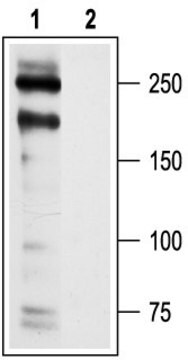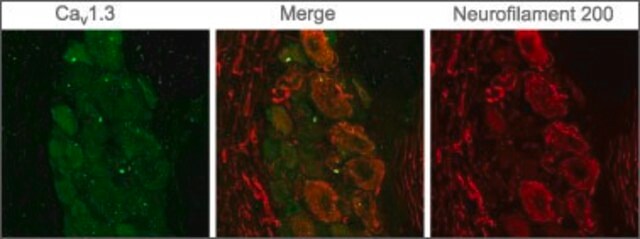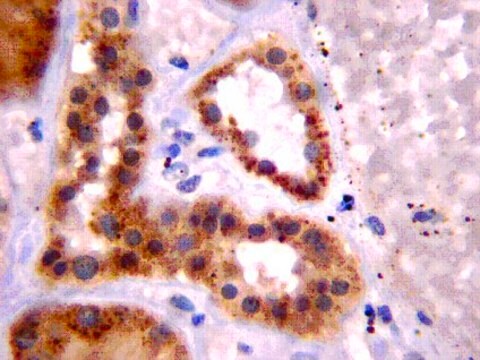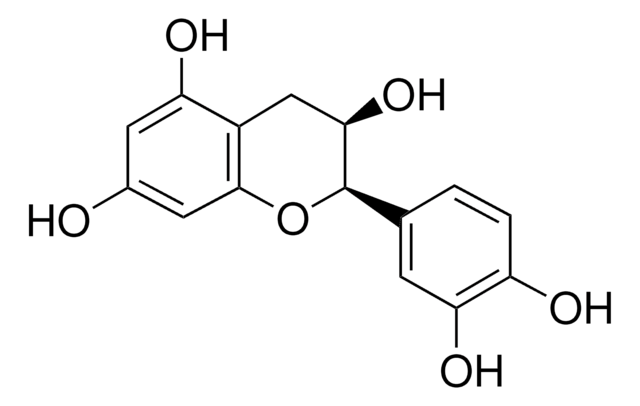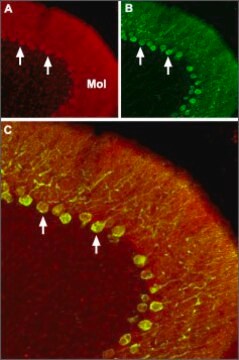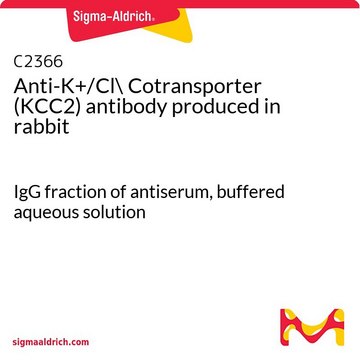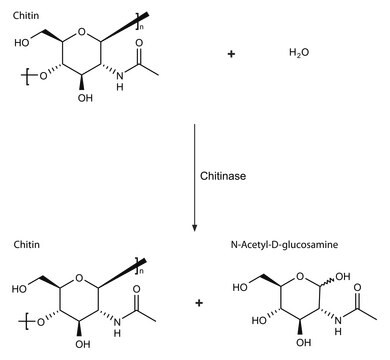C1603
Anti-Calcium Channel (α1C Subunit) (L-type of Voltage-gated Ca2+ Channel) antibody produced in rabbit
affinity isolated antibody
Synonym(e):
Anti-CACH2, Anti-CACN2, Anti-CACNL1A1, Anti-CCHL1A1, Anti-CaV1.2, Anti-LQT8, Anti-TS, Anti-TS. LQT8
About This Item
Empfohlene Produkte
Biologische Quelle
rabbit
Qualitätsniveau
Konjugat
unconjugated
Antikörperform
affinity isolated antibody
Antikörper-Produkttyp
primary antibodies
Klon
polyclonal
Speziesreaktivität
human, rat, mouse, rabbit
Methode(n)
immunohistochemistry: suitable using Rat brain sections
western blot: 1:200 using Rat brain and rat heart membranes
UniProt-Hinterlegungsnummer
Lagertemp.
−20°C
Posttranslationale Modifikation Target
unmodified
Angaben zum Gen
mouse ... Cacna1c(12288)
Verwandte Kategorien
Allgemeine Beschreibung
Spezifität
Immunogen
Anwendung
- SDS-PAGE
- western blotting
- coimmunoprecipitation
Immunohistochemistry (1 paper)
Physikalische Form
Haftungsausschluss
Sie haben nicht das passende Produkt gefunden?
Probieren Sie unser Produkt-Auswahlhilfe. aus.
Empfehlung
Lagerklassenschlüssel
10 - Combustible liquids
WGK
WGK 3
Flammpunkt (°F)
Not applicable
Flammpunkt (°C)
Not applicable
Hier finden Sie alle aktuellen Versionen:
Besitzen Sie dieses Produkt bereits?
In der Dokumentenbibliothek finden Sie die Dokumentation zu den Produkten, die Sie kürzlich erworben haben.
Kunden haben sich ebenfalls angesehen
Unser Team von Wissenschaftlern verfügt über Erfahrung in allen Forschungsbereichen einschließlich Life Science, Materialwissenschaften, chemischer Synthese, Chromatographie, Analytik und vielen mehr..
Setzen Sie sich mit dem technischen Dienst in Verbindung.